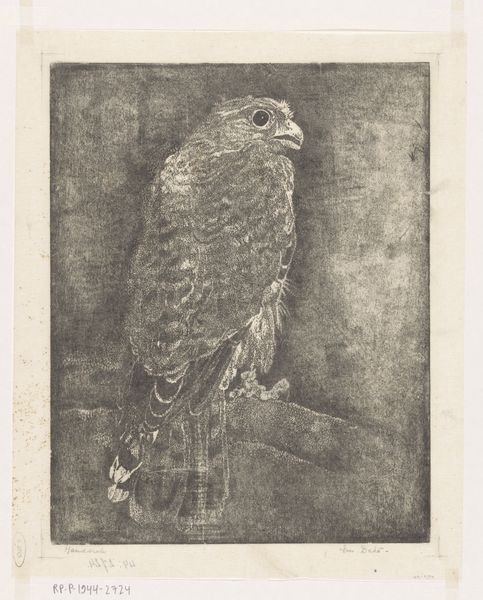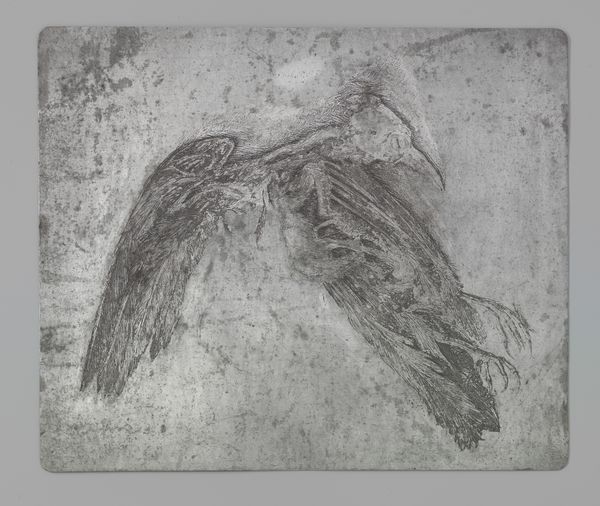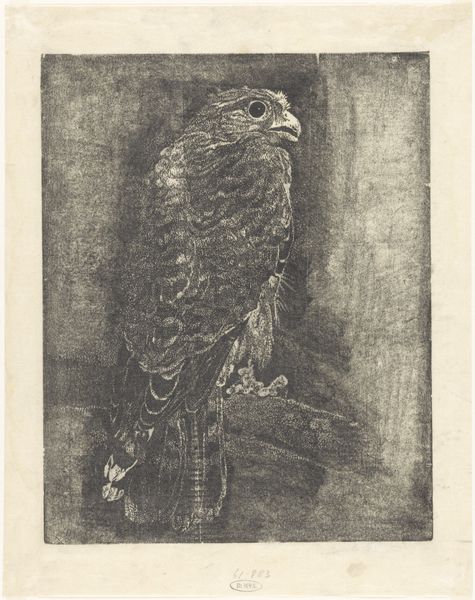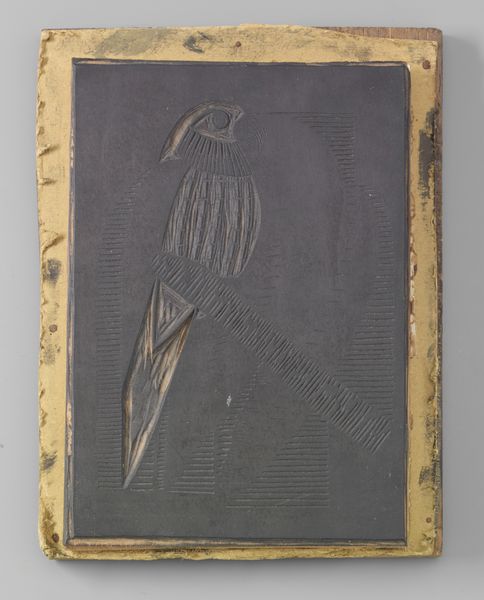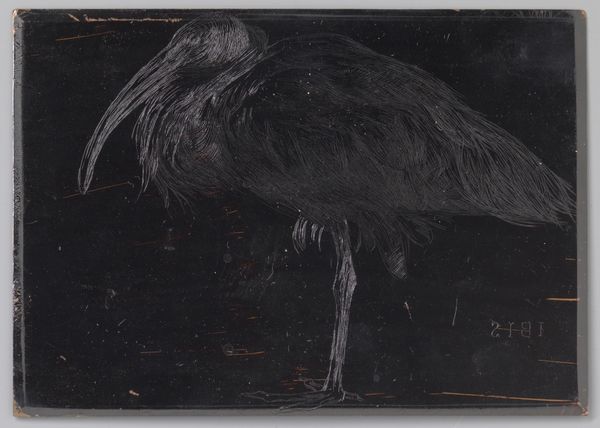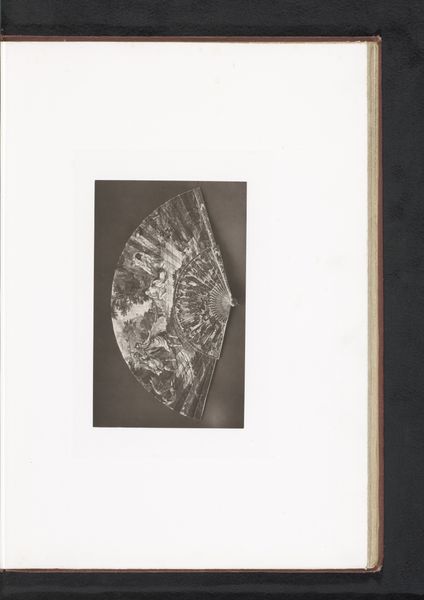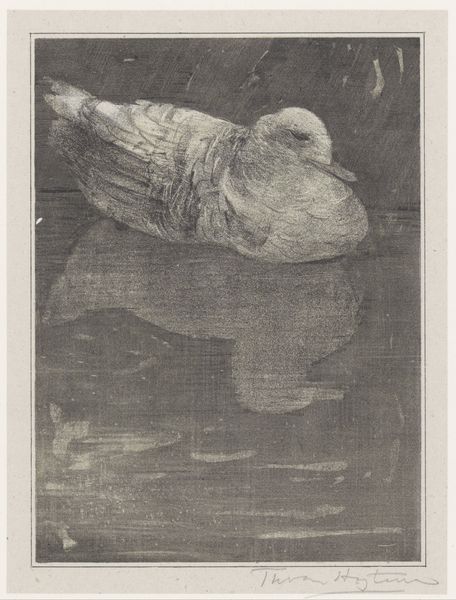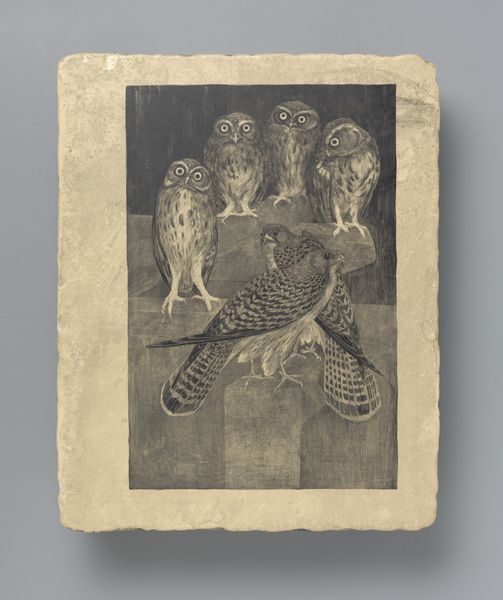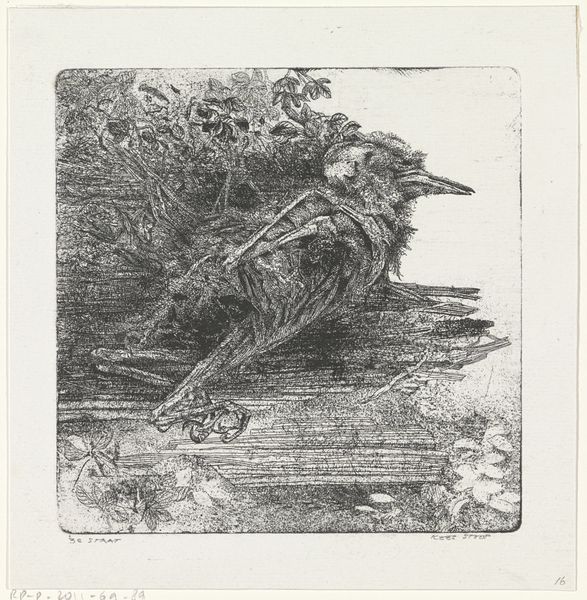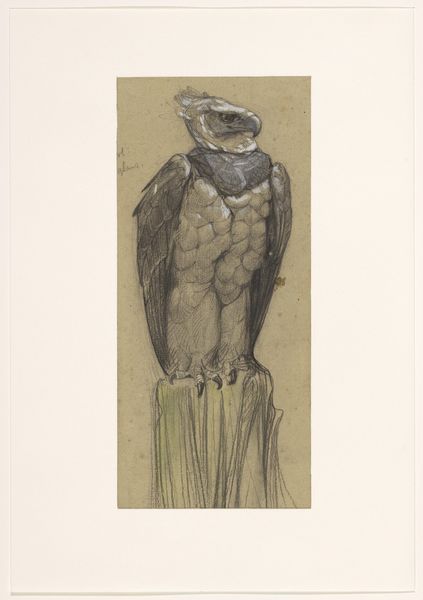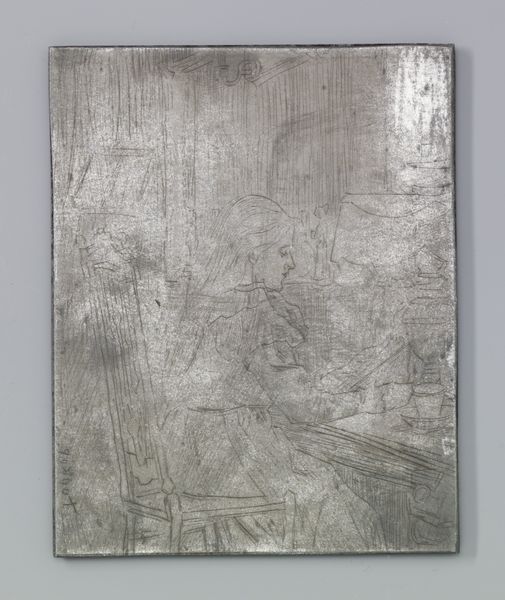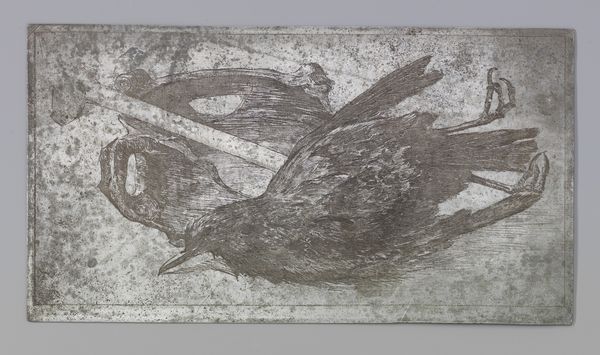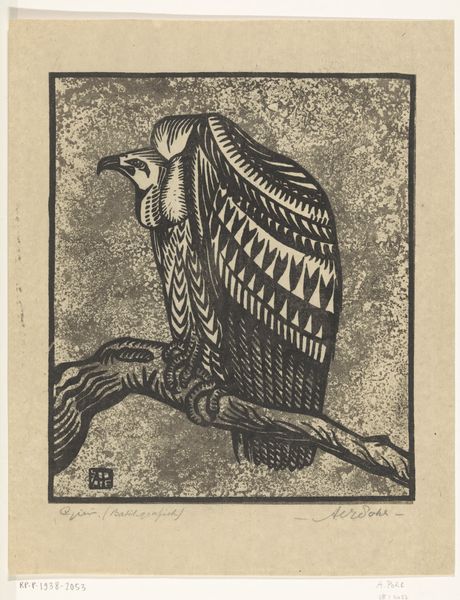
drawing, print, graphite
#
portrait
#
drawing
#
animal
# print
#
graphite
#
realism
Dimensions: height 280 mm, width 220 mm
Copyright: Rijks Museum: Open Domain
Curator: Standing before us is "Roofvogel" by Emilius Wilhelmus Dehé, an artwork dated sometime between 1916 and 1947, currently held at the Rijksmuseum. It appears to be a print, made using graphite on some sort of ground, and rendering a rather imposing bird of prey. Editor: Oh, it’s haunting, isn't it? The dark ground, and then the meticulous, almost obsessive detail in the feathers—it feels like the artist really wrestled with this creature's likeness. A bit ominous, really. Curator: The 'Roofvogel', literally 'bird of prey', possesses powerful symbolic resonance. Birds in art often represent freedom, aspiration, the soul’s journey – but a raptor... well, it complicates those notions, doesn't it? The sharp gaze and strong beak signify power, aggression, a hunter's instinct. Consider how those qualities might reflect the era in which it was created. Editor: Absolutely! It is an era shadowed by two world wars and the rise of oppressive regimes. That penetrating stare could easily represent vigilance, the necessity to see clearly in the face of looming darkness. Or maybe the artist identified with this fierce creature in times of turmoil? It is easy to fall down these speculative rabbit holes. Curator: Or consider, more broadly, the enduring cultural association of birds of prey with leadership, courage, and the strength to overcome adversity. Eagles, hawks, falcons… they've all held elevated status across different civilizations, embodying attributes to be admired and emulated. But look how the detail emphasizes the isolation of that creature! Editor: Exactly! It feels like this hawk—or whatever it is—isn’t soaring majestically above the world; it's perched on some shadowed branch, almost imprisoned by the frame, a poignant paradox of might confined. You've got these minute scratches capturing every contour, but instead of celebrating power, it evokes confinement! Curator: A fascinating reading. It invites us to ponder the layered symbolism inherent within the image, beyond straightforward interpretation, challenging conventional association of raptors. It really leaves quite an afterimage, don’t you agree? Editor: Absolutely. Makes you question your own assumptions about power and freedom.
Comments
No comments
Be the first to comment and join the conversation on the ultimate creative platform.
